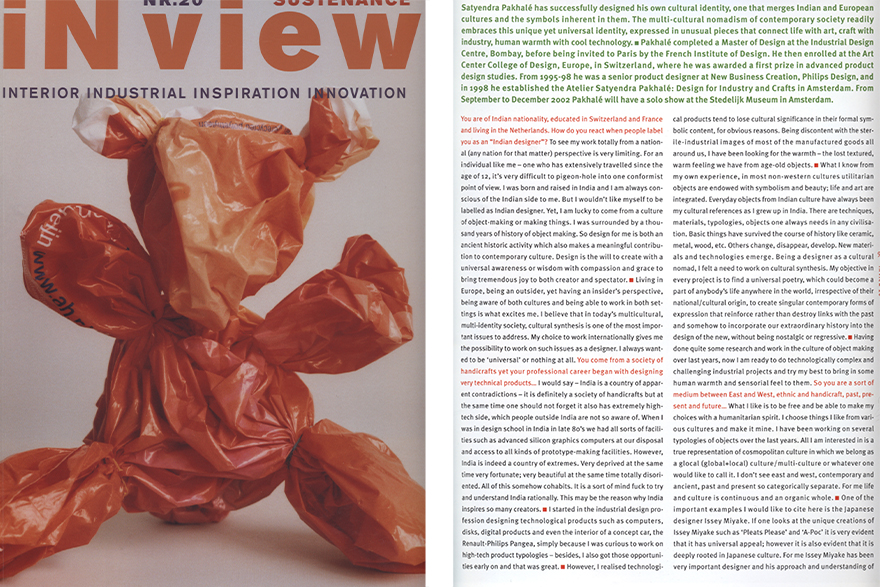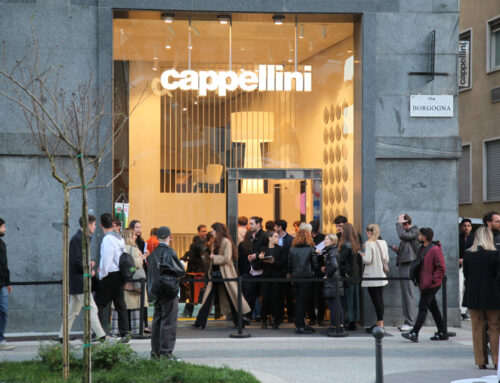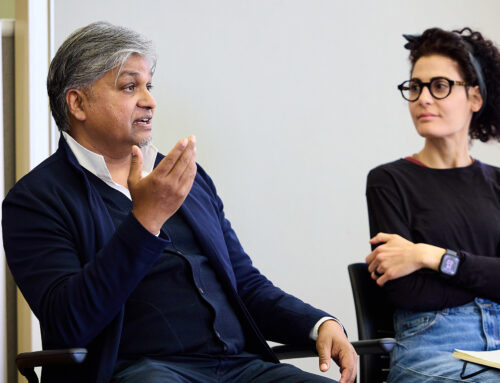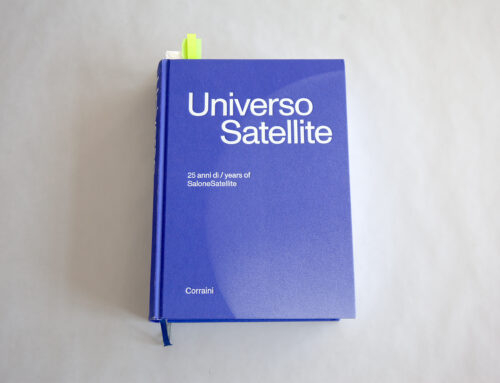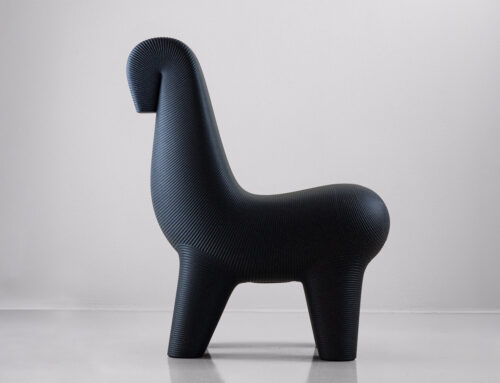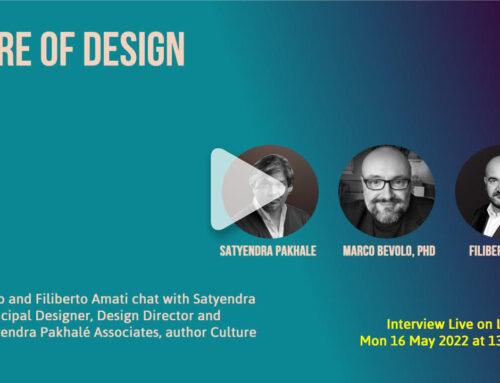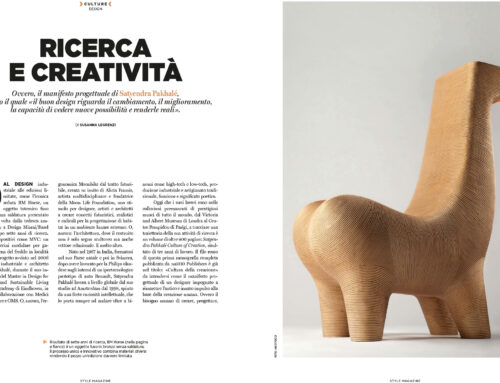Satyendra Pakhale has successfully designed his own cultural identity, one that merges Indian and European cultures and the symbols inherent in them. The multi-cultural nomadism of contemporary society readily embraces this unique yet universal identity, expressed in unusual pieces that connect life with art, craft with industry, human warmth with cool technology.. Pakhale completed a Master of Design at the Industrial Design Centre, Bombay, before being invited to Paris by the French Institute of Design. He then enrolled at the Art Center College of Design, Europe, in Switzerland, where he was awarded a first prize in advanced product design studies. From 1995-98 he was a senior product designer at New Business Creation, Philips Design, and in 1998 he established the Atelier Satyendra Pakhale: Design for Industry and Crafts in Amsterdam. From September to December 2002 Pakhale will have a solo show at the Stedelijk Museum in Amsterdam.
You are of Indian nationality, educated in Switzerland and France and living in the Netherlands. How do you react when people label you as an “Indian designer”?
To see my work totally from a national (any nation for that matter) perspective is very limiting. For an iridividual like me — one who has extensively travelled since the age 0112, it’s very difficult to pigeon-hole into one conformist point of view. I was born and raised in India and I am always conscious of the Indian side to me. But I wouldn’t like myself to be labelled as Indian designer. Yet, I am lucky to come from a culture of object-making or making things. I was surrounded by a thousand years of history of object making. So design for me is both an ancient historic activity which also makes a meaningful contribution to contemporary culture. Design is the will to create with a universal awareness or wisdom with compassion and grace to bring tremendous joy to both creator and spectator. Living in Europe, being an outsider, yet having an insider’s perspective, being aware of both cultures and being able to work in both settings is what excites me. I believe that in today’s multicultural, multi-identity society, cultural synthesis is one of the most important issues to address. My choice to work internationally gives me the possibility to work on such issues as a designer. I always wanted to be ‘universal’ or nothing at all.
You come from a society of handicrafts yet your professional career began with designing very technical products…
I would say — India is a country of apparent contradictions — it is definitely a society of handicrafts but at the same time one should not forget it also has extremely high-tech side, which people outside India are not so aware of. When I was in design school in India in late 8o’s we had all sorts of facilities such as advanced silicon graphics computers at our disposal and access to all kinds of prototype-making facilities. However, India is indeed a country of extremes. Very deprived at the same time very fortunate; very beautiful at the same time totally disoriented. All of this somehow cohabits. It is a sort of mind fuck to try and understand India rationally. This may be the reason why India inspires so many creators. I started in the industrial design profession designing technological products such as computers, disks, digital products and even the interior of a concept car, the Renault-Philips Pangea, simply because I was curious to work on high-tech product typologies — besides, I also got those opportunities early on and that was great. However, I realised technical products tend to lose cultural significance in their formal symbolic content, for obvious reasons. Being discontent with the sterile-industrial images of most of the manufactured goods all around us, I have been looking for the warmth — the lost textured, warm feeling we have from age-old objects. What I know from my own experience, in most non-western cultures utilitarian objects are endowed with symbolism and beauty; life and art are integrated. Everyday objects from Indian culture have always been my cultural references as I grew up in India. There are techniques, materials, typologies, objects one always needs in any civilisation. Basic things have survived the course of history like ceramic, metal, wood, etc. Others change, disappear, develop. New materials and technologies emerge. Being a designer as a cultural 9 nomad, I felt a need to work on cultural synthesis. My objective in every project is to find a universal poetry, which could become a part of anybody’s life anywhere in the world, irrespective of their national/cultural origin, to create singular contemporary forms of expression that reinforce rather than destroy links with the past and somehow to incorporate our extraordinary history into the design of the new, without being nostalgic or regressive.. Having done quite some research and work in the culture of object making over last years, now I am ready to do technologically complex and challenging industrial projects and try my best to bring in some human warmth and sensorial feel to them.
So you are a sort of medium between East and West, ethnic and handicraft, past, present and future…
What I like is to be free and be able to make my choices with a humanitarian spirit. I choose things I like from various cultures and make it mine. I have been working on several typologies of objects over the last years. All I am interested in is a true representation of cosmopolitan culture in which we belong as a glocal (global+local) culture/multi-culture or whatever one would like to call it. I don’t see east and west, contemporary and ancient, past and present so categorically separate. For me life and culture is continuous and an organic whole.. One of the important examples I would like to cite here is the Japanese designer Issey Miyake. If one looks at the unique creations of Issey Miyake such as ‘Pleats Please’ and `A-Poc’ it is very evident that it has universal appeal; however it is also evident that it is deeply rooted in Japanese culture. For me Issey Miyake has been very important designer and his approach and understanding of tradition — looking at it with a fresh perspective and innovation and turning it into contemporary industrial products— has special meaning. My mind is always preoccupied with the thought of how to create contemporary objects which seamlessly blend old and new, artisan and industry. I would like to see more and more merging of industrial techniques and craftsmanship in Industrial Design, which would bring out more emotional objects that we could relate to and feel close to, almost like good companions. My real challenge is to create an industrially designed product with a cosmopolitan position by approaching local realities of technology and craft, by observing their particularities in such a way as to continue to enhance them. One of my recent projects with Alessi is to evolve my Bell metal vase, which I designed as a craft object, into an industrially mass-produced product; for me that is a total journey as a “Designer for Industry and Craft”.
How does your choice of material, from Bell metal to ceramic to fibreglass, enter into your design process?
All materials (except hazardous and toxic materials) to me are like a palette of colours that I mix and match, of course in line with the ecology, function and the aesthetic parameters of a given project. I do not limit myself to certain materials, as the concept of every project has a material that best suits its execution, but I do not dwell on that. The choice of material is very unique to a project and my belief in creating a specific technical solution and aesthetic image of the given product. However, I also like to play with materials and that is the reason why the Horse chair is made in several different material versions. It is fascinating to see how our perception of an object changes, how it is transformed when it is executed in another material. To me the concept of functionality has several meanings and it is never one dogmatic modernist perspective. Above all modernity is way of living, thinking and working.
How does your design process change whether a product is manually or industrially produced?
After working in a high-tech industrial setting I realised that it is very difficult to influence or create an object with unique sensorial qualities, if one takes the manufacturing processes and techniques as they are. My entire research over the last years has been to create sensorial qualities by starting up projects in totally different settings and using and combining not-so-obvious techniques and materials, like a chair made of ceramic or Bell metal. I feel we need to get back some handmade aspects in industrial production. Actually, most industrial, mass-produced objects begin by being hand-made, in the form of the first prototype. At the same time, the manual work done in India is not purely artisanal — it is almost on the scale of industrial production, done entirely with hands. We don’t necessarily need to start making things by hand again, but to incorporate certain aspects by perhaps using 3D simulating computer technologies and creating objects with unique possibilities which cannot be made only by machine or by hand. Some kind of new evolution that takes the best of both worlds. What I am interested in is New Craftsmanship, which allies modernity with tradition and daily folklore with advanced technology in the eclecticism of its methods, as a catilyst of universal communication. My work could be described as symbolic, warm, personal and my objects have energetic physical presence halfway between soft and hard, between flesh and object, between craft and industry.
Many of the forms you make are quite symbolic…
The objects I create not only have form but they also have symbolic and moral intent. I have always believed that the form of an object should have a content, a universal thought. This can be seen clearly, the poetic analogy of forms, but in its most sublime state. It is evident in the Fish chair of 1997.98, the Horse chair of 2000, the Bird Chair of zoom and the Panther chair of 2002.
The apparently figurative forms are carriers of character and universal thought beyond their metamorphic capabilities. These shapes also possess an algebraic ability to enter into connection with each other and thus release a poetic phenomenon. It is precisely this poetic capacity of metamorphosis that endows forms with meaning and allows them to escape the confines of rational analysis.
